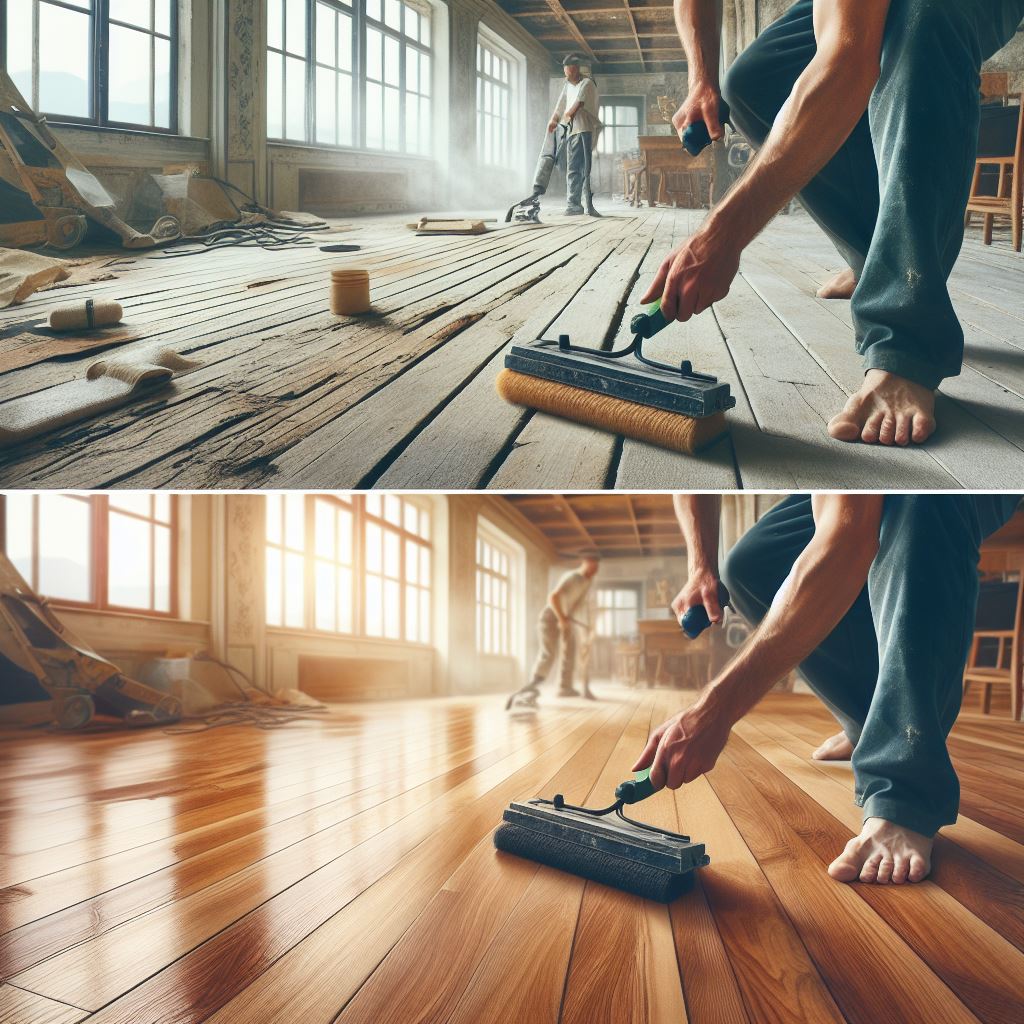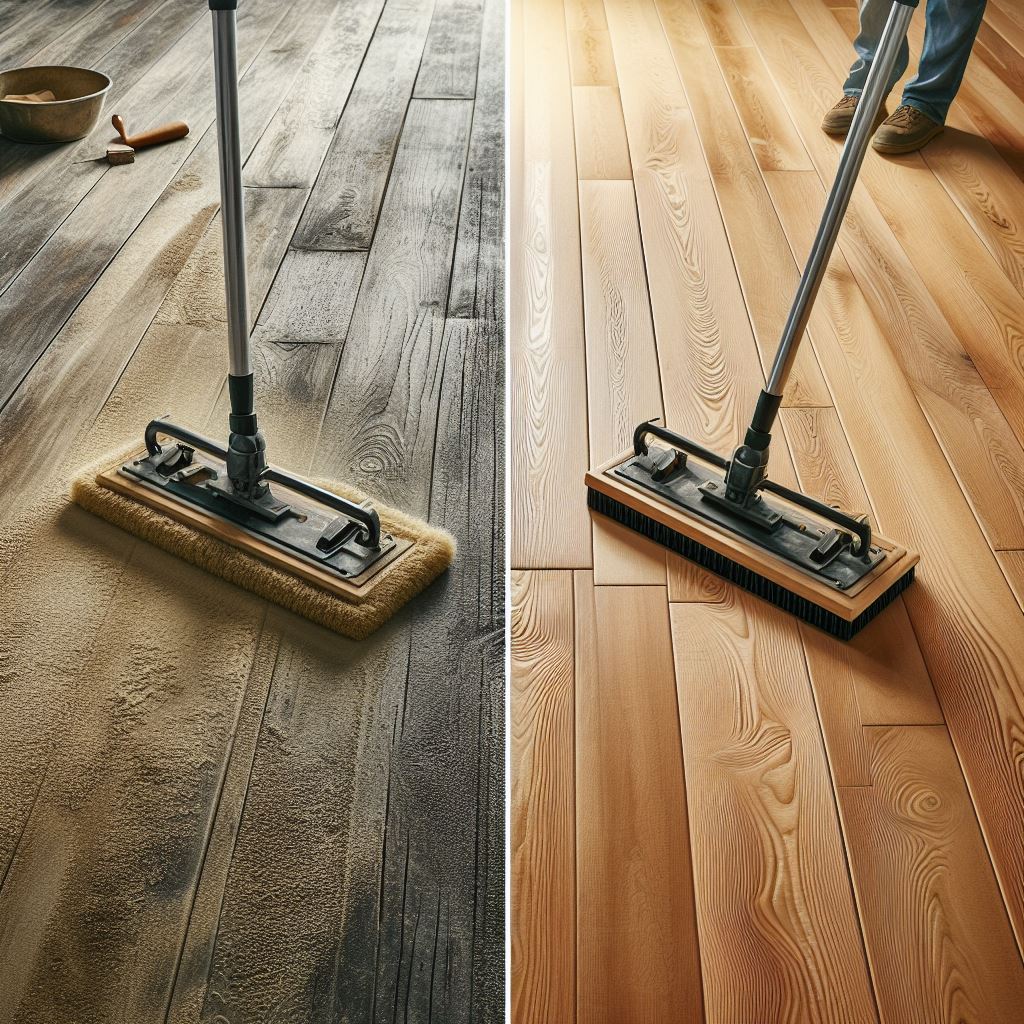Engineered wood flooring has swiftly gained popularity as a versatile and durable alternative to traditional hardwood. Unlike solid wood flooring, engineered wood is designed to provide enhanced stability and resistance to environmental changes. This type of flooring is particularly well-suited for areas with fluctuating humidity and temperature levels, such as basements and kitchens.
One of the key attributes of engineered wood flooring is its unique construction. It typically consists of multiple layers of wood, bonded together under high pressure. The top layer is a thin veneer of real hardwood, which gives it the desirable appearance and texture of solid wood. Beneath this veneer, you'll find several layers of plywood or high-density fiberboard (HDF), which provide strength and resilience.
With engineered wood flooring, you can enjoy the look and feel of hardwood without some of the drawbacks. It's an excellent choice for those who seek aesthetic appeal combined with practical benefits. Whether you are renovating your home or building a new one, considering engineered wood flooring can be a game-changer.
Request a free estimate or email us at sales@paradise-spaces.com to get started on your flooring project today!
Core Layers of Engineered Wood Flooring

The core layers of engineered wood flooring are what set it apart from solid hardwood, offering a blend of durability, stability, and beauty. These layers are meticulously constructed to ensure that the flooring remains robust and visually appealing over time.
1. Top Layer (Wear Layer): This is the visible surface layer made of real hardwood. It determines the floor's appearance and can be made from a variety of wood species such as oak, maple, or walnut. The thickness of this layer can vary, affecting the floor's longevity and its ability to be sanded and refinished in the future.
2. Core Layer: Beneath the top layer lies the core, typically consisting of multiple layers of plywood or high-density fiberboard (HDF). These layers are arranged in a cross-grain configuration, adding to the floor's dimensional stability. This construction method helps to resist warping and swelling, which can occur due to moisture and temperature changes.
3. Backing Layer: The bottom layer, often made from hardwood or plywood, provides additional stability and support. It acts as a foundation for the entire plank, ensuring that the flooring remains flat and secure once installed.
Together, these layers work harmoniously to create a flooring solution that is both aesthetically pleasing and highly functional. The engineered design allows for installation in areas where traditional hardwood might not be suitable, expanding your options for home design and improvement.
Top Veneer Layer and Its Importance

The top veneer layer of engineered wood flooring is crucial for both its appearance and performance. This layer, also known as the wear layer, is crafted from real hardwood, bringing the natural beauty and texture of wood into your home.
Appearance: The top veneer layer determines the visual appeal of the flooring. It can be made from various wood species like oak, maple, cherry, and walnut, each offering unique grain patterns and colors. This layer can also be stained and finished in different ways to match your interior design preferences, from rustic to modern styles.
Durability: The thickness of the top veneer layer significantly influences the durability and lifespan of the flooring. Thicker veneer layers can withstand more wear and tear, allowing for multiple refinishing cycles over the years. This means your floor can be sanded down and refinished to remove scratches and restore its original beauty, extending its useful life.
Protection: The top veneer layer also acts as a protective barrier for the layers beneath. It shields the core and backing layers from daily wear, potential spills, and minor impacts. Additionally, many engineered wood floors come with a factory-applied finish that adds an extra layer of protection, enhancing resistance to scratches and stains.
In summary, the top veneer layer is not just about looks; it plays a vital role in the overall performance and longevity of your engineered wood flooring. Choosing the right veneer thickness and wood species can make a significant difference in how well your floors stand up to daily life.
Benefits of Engineered Wood Flooring

Engineered wood flooring offers numerous benefits that make it a popular choice for homeowners and designers alike. Combining the beauty of natural wood with enhanced durability and versatility, it stands out as an excellent flooring option.
Stability and Durability: One of the primary benefits of engineered wood flooring is its exceptional stability. Unlike traditional hardwood, the multi-layer construction of engineered wood resists warping and swelling caused by changes in humidity and temperature. This makes it an ideal choice for areas with fluctuating climates or moisture levels, such as basements and kitchens.
Versatility: Engineered wood flooring can be installed over various subfloors, including concrete and radiant heating systems. It is also available in a wide range of styles, colors, and finishes, allowing you to achieve the look of exotic hardwoods or reclaimed wood without the associated costs and environmental impact.
Cost-Effectiveness: While engineered wood flooring offers the appearance of solid wood, it is often more affordable. The manufacturing process uses less of the precious hardwood, making it a cost-effective alternative without compromising on aesthetics.
Easy Installation: Engineered wood flooring typically features click-lock or tongue-and-groove systems, which simplify the installation process. This ease of installation can save both time and money, especially if you opt for a DIY approach.
Environmental Benefits: Engineered wood flooring is considered more environmentally friendly than traditional hardwood. The use of plywood or high-density fiberboard (HDF) as the core material means fewer trees are needed for production, contributing to sustainable forestry practices.
Overall, the benefits of engineered wood flooring make it a smart choice for anyone looking to combine the elegance of natural wood with practical advantages. Its stability, versatility, and eco-friendliness ensure that it will continue to be a favored option for years to come.
How Engineered Wood Flooring is Made
The process of creating engineered wood flooring is a fascinating blend of traditional craftsmanship and modern technology. This meticulous construction method ensures that the flooring is not only beautiful but also highly durable and stable.
Core Layers: The foundation of engineered wood flooring consists of multiple layers of plywood, high-density fiberboard (HDF), or hardwood. These layers are stacked in a crisscross pattern, which enhances stability and minimizes the risk of warping or swelling. The number of layers can vary, typically ranging from three to twelve, depending on the quality and intended use of the flooring.
Top Veneer: The top layer, or veneer, is made from a thin slice of real hardwood. This veneer provides the aesthetic appeal of solid wood, showcasing the natural grain and texture of species such as oak, maple, walnut, or exotic woods. The thickness of the veneer can vary, with thicker veneers allowing for refinishing and extending the lifespan of the flooring.
Bonding Process: The layers are bonded together using high-quality adhesives, ensuring a strong and durable connection. This bonding process is typically done under high pressure and heat, which further enhances the stability of the flooring.
Finishing Touches: Once the layers are securely bonded, the engineered wood planks are sanded and finished to achieve the desired appearance and texture. Some planks may undergo additional treatments, such as staining or distressing, to create specific looks. The finished planks are then coated with protective layers, such as polyurethane or aluminum oxide, to enhance durability and resistance to scratches and wear.
In summary, the intricate construction process of engineered wood flooring results in a product that combines the natural beauty of hardwood with advanced performance characteristics. The careful selection of materials and precise manufacturing techniques ensure that engineered wood flooring remains a popular and reliable choice for various applications.
Comparing Engineered Wood to Solid Hardwood

When it comes to choosing between engineered wood flooring and solid hardwood, understanding their key differences can help you make an informed decision that best suits your needs and preferences. Both have their unique advantages, and the right choice often depends on factors such as installation environment, budget, and desired aesthetics.
Stability and Durability: Engineered wood is renowned for its stability, thanks to its multi-layer construction. This makes it less susceptible to expansion and contraction due to humidity and temperature changes, making it an excellent choice for areas like basements and kitchens. Solid hardwood, made from a single piece of wood, can be more prone to warping and swelling in fluctuating conditions but offers long-term durability when maintained properly.
Installation: Engineered wood flooring offers versatile installation options, including floating, glue-down, and nail-down methods. This makes it easier and often more cost-effective to install. Solid hardwood typically requires a nail-down installation, which can be more labor-intensive and costly.
Refinishing: While both types of flooring can be refinished, solid hardwood has the edge in this category. Its thick composition allows for multiple refinishing sessions over its lifespan, whereas engineered wood can usually only be refinished once or twice, depending on the thickness of the top veneer.
Cost: Typically, engineered wood flooring comes at a lower price point compared to solid hardwood, making it a more budget-friendly option. However, both materials offer varying price ranges depending on the wood species, finish, and quality.
Aesthetics: Both engineered wood and solid hardwood offer the rich, natural beauty of wood. With engineered wood, you can achieve the same luxurious look as solid hardwood, thanks to its real wood veneer. Advances in manufacturing have made it difficult to distinguish between the two once installed.
Ultimately, the choice between engineered wood and solid hardwood depends on your specific needs and preferences. If you’re looking for a stable, versatile, and budget-friendly option, engineered wood flooring is an excellent choice. On the other hand, if you prefer the traditional appeal and long-term refinishing potential of solid hardwood, it might be worth the investment.
Need help deciding? Request a free estimate or email us at sales@paradise-spaces.com to discuss your flooring options!
